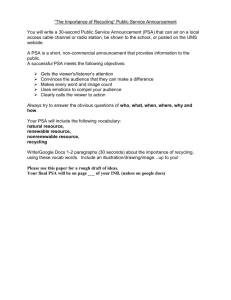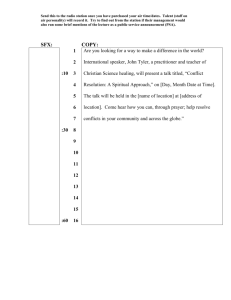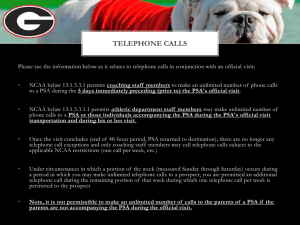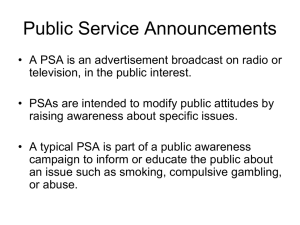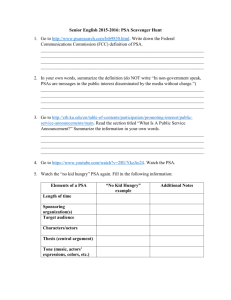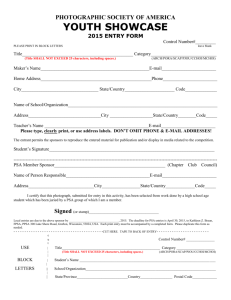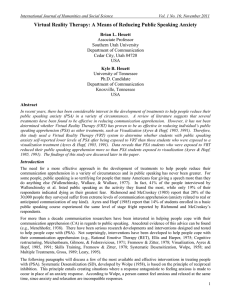- GCUMedia.com
advertisement
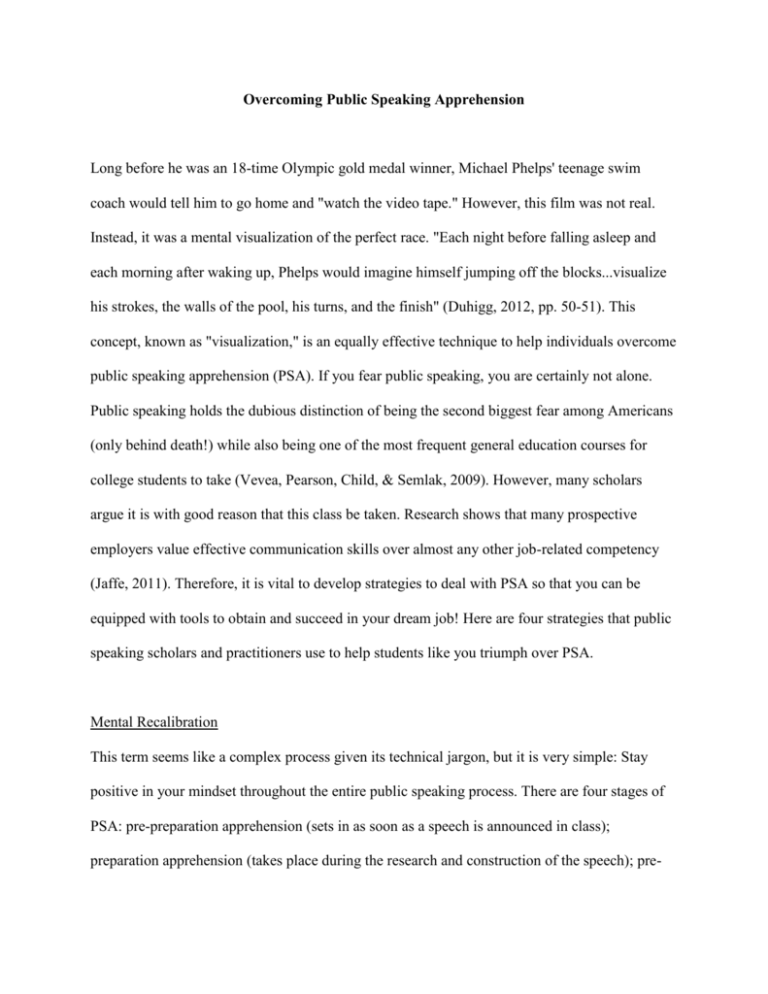
Overcoming Public Speaking Apprehension Long before he was an 18-time Olympic gold medal winner, Michael Phelps' teenage swim coach would tell him to go home and "watch the video tape." However, this film was not real. Instead, it was a mental visualization of the perfect race. "Each night before falling asleep and each morning after waking up, Phelps would imagine himself jumping off the blocks...visualize his strokes, the walls of the pool, his turns, and the finish" (Duhigg, 2012, pp. 50-51). This concept, known as "visualization," is an equally effective technique to help individuals overcome public speaking apprehension (PSA). If you fear public speaking, you are certainly not alone. Public speaking holds the dubious distinction of being the second biggest fear among Americans (only behind death!) while also being one of the most frequent general education courses for college students to take (Vevea, Pearson, Child, & Semlak, 2009). However, many scholars argue it is with good reason that this class be taken. Research shows that many prospective employers value effective communication skills over almost any other job-related competency (Jaffe, 2011). Therefore, it is vital to develop strategies to deal with PSA so that you can be equipped with tools to obtain and succeed in your dream job! Here are four strategies that public speaking scholars and practitioners use to help students like you triumph over PSA. Mental Recalibration This term seems like a complex process given its technical jargon, but it is very simple: Stay positive in your mindset throughout the entire public speaking process. There are four stages of PSA: pre-preparation apprehension (sets in as soon as a speech is announced in class); preparation apprehension (takes place during the research and construction of the speech); pre- performance apprehension (comes to the forefront while practicing the night before or morning of a speech); and performance apprehension (the dread one feels while presenting the speech, usually in the introduction). Each of these stages possesses a common denominator: a negative or pessimistic attitude only exacerbates the feelings of anxiety. By practicing positive mental calibration from the moment you are assigned a speech to the opening line of your introduction, you will not only limit those bothersome nerves, you will also speak with greater authority and confidence! Relaxation Breathing Exercises Utilizing breathing exercises to increase mental clarity and tranquility is a long-standing practice in many yoga communities, and research shows it is remarkably effective (Holcombe, 2012). These techniques prove to be equally successful in overcoming PSA. One exercise in particular known as "abdominal breathing" - is a quick and easy breathing technique that, if practiced consistently and with great mental concentration, mitigates the effects of PSA through constructing mind-body relaxation. It begins with using your abdominal area to breathe deeply, hold for roughly five seconds, and then exhale slowly. However, what makes this exercise unique is that while you are exhaling, you will quietly speak a word that induces peace or tranquility (such as "calm," "soothe," "relax") while focusing on the effects of that word in your mind. Repeat this roughly five to seven times in an empty, quiet space and you might be surprised to feel not only relaxed, but more focused and attentive! There are many other exercises that are similar in nature, but this simple method is good way to overcome PSA. Visualization Much like the integral role it plays for Michael Phelps in his Olympic training, visualizing yourself giving a speech in the exact environment you will be presenting in generates innumerable benefits. First, it helps to normalize the act of public speaking, which is an important first step to overcoming some of the more debilitating effects of PSA. Second, by normalizing this action, it allows individuals to concentrate on the specific components of the speech (such as hand gestures, pitch variation, and eye contact) as opposed to the emotion one attaches to public speaking. Third, visualization in the early parts of speech practices allows individuals to pinpoint what areas of the speech need to be polished in future preparation sessions. Committing yourself to this simple but valuable strategy will be yet another way to conquer your fear of public speaking! Preparation and Practice The act of providing public speaking tips for success is now mythologized through techniques that lack research backing (i.e. "picturing the audience in their underwear"). Anomalous strategies such as these are now deeply woven into the national discussion over public speaking because they represent what most scholars agree does not exist: a "magic solution" to overcome PSA. In reality, the most reliable strategy to deal with PSA is applicable to almost any developmental skill: strategic and consistent preparation. Just as vocalists improve their range through hours of singing exercises, public speakers only progress if they constantly practice their verbal and nonverbal delivery, language construction, and audience engagement techniques. Although the axiom "practice makes perfect" is not a truly attainable goal (even the most advanced public speakers will make mistakes), regular and focused practice sessions are the most dependable way to maximize your public speaking ability. Public speaking apprehension is experienced by nearly every student in a public speaking course, and over 20% of those students experience severe PSA (Vevea, et al., 2009). However, through the strategies of mental recalibration, relaxation breathing exercises, visualization, and constant preparation and practice, you can overcome one of humanity's biggest fears! References Duhigg, C. (2012). The power of habit: Why we do what we do in life and business. New York, NY: Random House LLC. Holcombe, K. (2012, August). Healing breath. Yoga Journal. Retrieved from http://www.yogajournal.com/practice/2844 Vevea, N. N., Pearson, J. C., Child, J. T., & Semlak, J. L. (2009). The only thing to fear is...public speaking?: Exploring predictors of communication in the public speaking classroom. Journal Of The Communication, Speech & Theatre Association Of North Dakota, 22 1-8.
